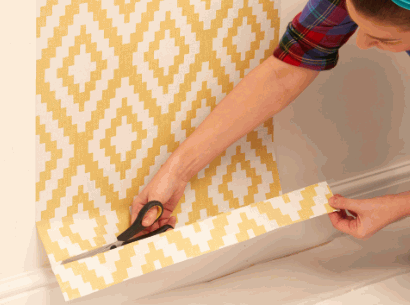Are you tired of your mundane and dull bedroom walls? Do you want to revamp your sanctuary with a touch of creativity and uniqueness? Look no further! In this article, we will be discussing the best bedroom wallpaper options to add a burst of life and personality to your space. Get ready to transform your bedroom into a dreamy haven with these stunning wallpaper ideas.
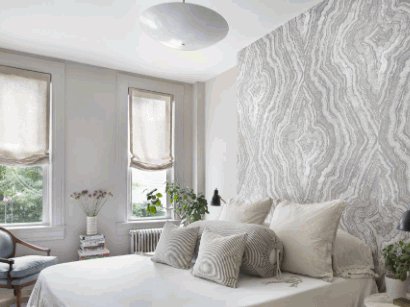
What Is Bedroom Wallpaper?
Bedroom wallpaper is a type of decorative paper that is specifically designed for use on bedroom walls. It offers a wide range of designs, colors, and textures, allowing individuals to add a personal touch to their living space. When selecting bedroom wallpaper, it is important to take into account the size of the room, the desired atmosphere, and personal style preferences.
This type of wallpaper has been around since the 16th century, originally used by the aristocracy to decorate their living spaces with elaborate designs and luxurious materials.
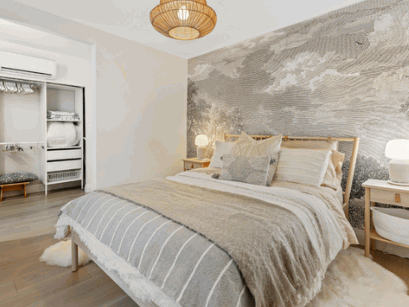
What Are The Different Types Of Bedroom Wallpaper?
A bedroom is a space where we seek comfort and relaxation, and the right wallpaper can greatly enhance the ambiance of this room. With so many options available, it can be overwhelming to choose the perfect wallpaper for your bedroom. In this section, we will explore the different types of bedroom wallpaper, from durable and versatile vinyl wallpaper to luxurious and natural grasscloth wallpaper. We will also discuss the unique qualities of textured, fabric, foil, and mural wallpaper, providing you with a comprehensive guide to help you make the best decision for your bedroom.
1. Vinyl Wallpaper
- Clean the walls thoroughly to remove any dirt, dust, or grease.
- Measure the wall height and add a few inches for trimming.
- Cut the vinyl wallpaper according to the measurements.
- Apply adhesive to the back of the wallpaper and let it set for a few minutes.
- Starting from the top, carefully apply the vinyl wallpaper to the wall, smoothing it out as you go.
- Use a wallpaper smoother to remove air bubbles and wrinkles.
- Trim the excess wallpaper at the bottom and top using a sharp blade.
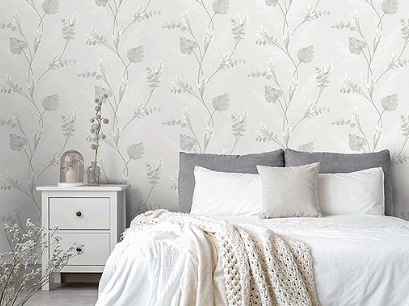
2. Grasscloth Wallpaper
Grasscloth wallpaper is a natural wall covering made from woven grasses, providing a unique and textured look. It is a great choice for adding warmth and coziness to any room. With a variety of colors and weaves available, there are options to complement any decor style. As a bonus, grasscloth wallpaper is eco-friendly and adds a touch of nature to interior spaces. Keep in mind, however, that it is not recommended for high-moisture areas.
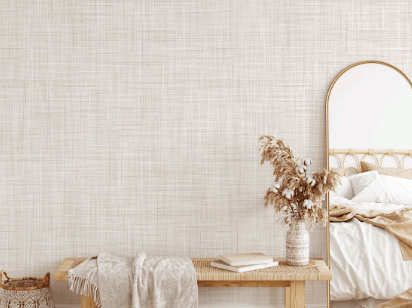
3. Textured Wallpaper
Textured wallpaper adds depth and dimension to a room, creating a tactile experience. It offers a versatile option to enhance the visual appeal of a space, making it an excellent choice for adding character to the bedroom.
Fact: Textured wallpaper can help in soundproofing a room by reducing echoes and noise reverberation.
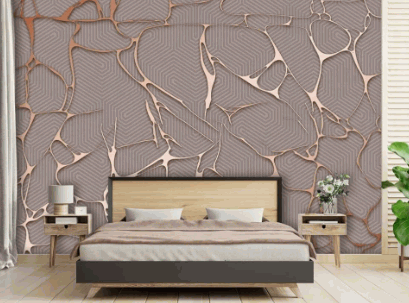
4. Fabric Wallpaper
Fabric wallpaper, such as silk or linen, adds a touch of luxury and warmth to any bedroom. Its cozy and refined atmosphere is perfect for creating a comfortable and elegant sleeping area. Moreover, fabric wallpaper can bring depth and texture to the walls, elevating the overall aesthetic of the room.
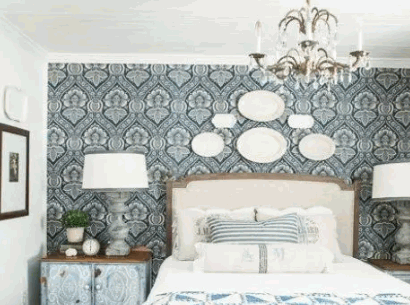
5. Foil Wallpaper
- Choose the suitable adhesive for foil wallpaper to ensure it adheres properly.
- Thoroughly clean the wall surface to remove any dirt or debris before applying the wallpaper.
- Carefully measure and cut the foil wallpaper to fit the wall's dimensions.
- Use a smoothing tool to remove any air bubbles or wrinkles during the application process.
- For large or intricate foil wallpaper designs, it may be best to opt for professional installation.
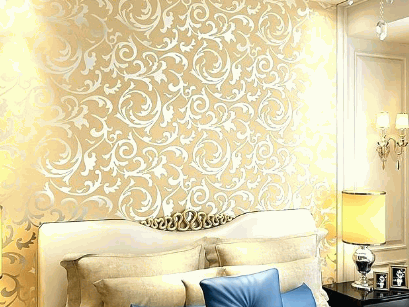
6. Mural Wallpaper
- Prepare the Wall: Ensure the wall is clean and smooth, free of any imperfections.
- Measure and Cut the Mural Wallpaper: Measure the wall's dimensions and cut the mural wallpaper accordingly, allowing extra adjustments.
- Apply Adhesive to the Mural Wallpaper: Use wallpaper adhesive following the manufacturer's instructions, ensuring complete coverage.
- Hang the Mural Wallpaper: Carefully position the mural wallpaper on the wall, starting from the top and smoothing it down as you work your way to the bottom.
- Smooth Out Any Bubbles or Wrinkles: Use a wallpaper smoother to eliminate any air bubbles or wrinkles.
- Trim Excess Mural Wallpaper: Use a sharp blade to trim excess wallpaper from the edges and corners for a clean finish.
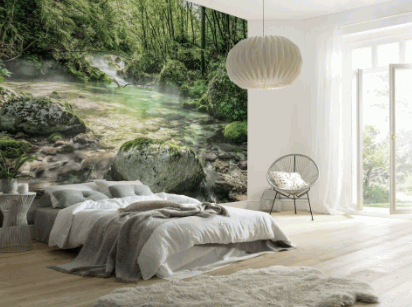
How To Choose The Best Bedroom Wallpaper?
Choosing the perfect wallpaper for your bedroom can be a daunting task. With so many options available, it can be overwhelming to decide which one will best suit your space. In this section, we will discuss the important factors to consider when choosing the best bedroom wallpaper. From the style of the room to the color scheme and even the function of the room, each element plays a crucial role in finding the perfect wallpaper. By the end of this section, you will have a better understanding of how to choose the best wallpaper for your bedroom.
1. Consider The Style Of The Room
- Take into account the existing style elements, such as furniture and decor, when selecting a wallpaper to ensure it complements the overall aesthetic.
- Consider the theme of the room, whether it's modern, traditional, or eclectic, and choose a wallpaper that aligns with this theme.
- When choosing a wallpaper style, also consider the room's architectural features, such as molding or built-in elements.
It's important to create a cohesive look that reflects your taste and enhances the ambiance of the space when considering the style of the room.
2. Choose A Color Scheme
- Consider the mood: Decide if you want the room to feel calming, energizing, or cozy.
- Identify a base color: Choose a primary color as the foundation for your color scheme.
- Accent colors: Select 1-2 accent colors to complement the base color and add visual interest.
Discover: How To Make A Bedroom Cozy
3. Think About The Function Of The Room
- Consider the primary function of the bedroom, such as relaxation, work, or storage needs.
- Factor in any specific requirements, like a quiet environment for better sleep or adequate lighting for reading or working.
- Assess the layout to ensure that the wallpaper choice complements the room's purpose and layout.
Did you know? A bedroom with calming wallpaper designs can promote better sleep and relaxation.
4. Consider The Size Of The Room
- Assess the dimensions of the room to determine the amount of wallpaper needed.
- Consider the height of the walls to ensure the wallpaper pattern aligns.
- For small rooms, opt for lighter-colored wallpapers to create a sense of openness.
- In larger rooms, bold patterns or darker colors can add coziness and intimacy.
What Are The Benefits Of Bedroom Wallpaper?
When it comes to bedroom decor, wallpaper may not be the first thing that comes to mind. However, incorporating wallpaper into your bedroom design can have numerous benefits. In this section, we will discuss the different advantages of using wallpaper in your bedroom. From adding visual interest to hiding imperfections on walls, we will explore the various ways in which wallpaper can enhance your bedroom's overall aesthetic. So, let's dive into the benefits of bedroom wallpaper and how it can elevate your space.
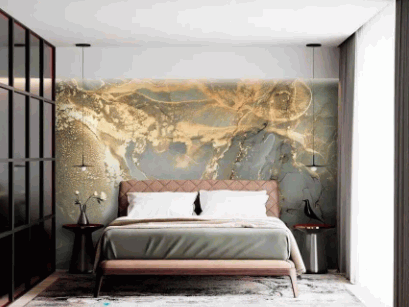
1. Adds Visual Interest
- Consider the room's focal point and choose a wallpaper with patterns or textures that add visual interest and draw attention.
- Opt for bold colors or intricate designs to create a visually captivating feature wall.
- Use wallpaper with 3D elements or metallic accents to add depth and allure to the room.
2. Can Be Used To Create Focal Points
Creating focal points with bedroom wallpaper involves a step-by-step process:
- Identify the focal wall in the room.
- Choose a wallpaper design that contrasts with the other walls and can be used to create focal points.
- Consider using bold patterns or textures to draw attention.
- Ensure the focal point aligns with the room's theme and furniture arrangement.
- Position the focal wallpaper to complement the room's layout and enhance visual interest.
3. Hides Imperfections On Walls
- Fill any holes or cracks in the wall with spackling compound and sand smooth.
- Apply a coat of primer to the walls to create a smooth surface for the wallpaper.
- Choose a wallpaper with a textured or patterned design to effectively hide any imperfections on the walls.
- Hang the wallpaper carefully, making sure to properly align it to conceal any flaws.
4. Easy To Change And Update
- Measure and Cut the Wallpaper: Take accurate measurements of the wall and cut the wallpaper accordingly to ensure a perfect fit.
- Apply Adhesive to the Wallpaper: Use a suitable adhesive and apply it evenly to the wallpaper for proper adhesion to the wall.
- Hang the Wallpaper: Carefully hang the wallpaper, ensuring it aligns with the edges and corners.
- Smooth Out Any Bubbles or Wrinkles: Use a smoothing tool to eliminate any bubbles or wrinkles for a flawless finish.
- Trim Excess Wallpaper: Trim off any excess wallpaper for a neat and polished appearance.
- Easy to Change and Update: This wallpaper is designed to be easily changed and updated, making it a convenient option for those who like to switch up their decor frequently.
How To Install Bedroom Wallpaper?
Are you ready to give your bedroom a fresh new look with some beautiful wallpaper? Before you get started, it’s important to know the proper steps for installation. In this section, we’ll guide you through the process of how to install bedroom wallpaper. From gathering materials and tools to trimming excess wallpaper, we’ll cover all the necessary steps to ensure a successful and professional-looking installation. Let’s get started!
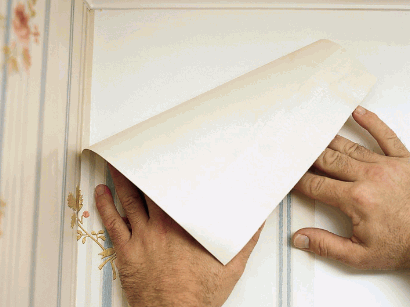
1. Gather Materials And Tools
- Measure the wall area for wallpaper coverage.
- Purchase wallpaper, adhesive, smoothing tool, utility knife, and a water tray.
- Ensure you have a ladder, pencil, sponge, and a cloth for cleanup.
When preparing for wallpaper installation, be sure to gather all necessary materials and tools. It's important to double-check your measurements to avoid any shortages.
2. Prepare The Walls
- Clear the walls of any existing wallpaper, adhesive residue, or debris.
- Prepare the walls by repairing any cracks, holes, or imperfections using a spackle or joint compound.
- Sand the walls to create a smooth surface for the wallpaper to adhere to.
- Wipe down the walls with a damp cloth to remove any dust or particles.
- Prime the walls with a suitable primer to ensure proper adhesion of the wallpaper.
3. Measure And Cut The Wallpaper
- Measure the wall: Use a tape measure to determine the height of the wall, adding a few inches for trimming.
- Cut the wallpaper: Unroll the wallpaper and measure the length needed, accounting for the pattern repeat. Use a sharp utility knife to cut the wallpaper to the correct size.
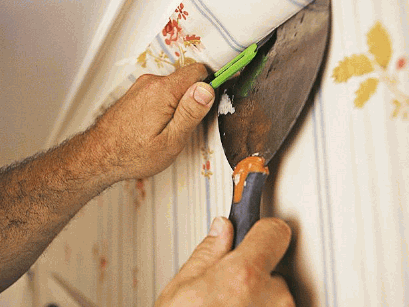
4. Apply Adhesive To The Wallpaper
- Prepare the adhesive: Choose a high-quality wallpaper adhesive suitable for the specific wallpaper material.
- Follow the instructions: Mix the adhesive as per the manufacturer's guidelines to achieve the right consistency.
- Apply the adhesive to the wallpaper: Use a paint roller or a paste brush to spread the adhesive on the back of the wallpaper.
- Book the wallpaper: After applying the adhesive, fold the wallpaper onto itself (known as booking) to activate the paste.
Pro-tip: Always start applying the adhesive from the center of the wallpaper towards the edges for a smooth and bubble-free application.
5. Hang The Wallpaper
- Prepare the wallpaper by aligning the pattern and cutting it to the appropriate size.
- Apply adhesive evenly to the back of the wallpaper.
- Position the wallpaper on the wall, starting from the top and smoothing it down.
- Use a wallpaper brush to eliminate air bubbles and achieve a smooth finish.
- Trim any excess wallpaper at the ceiling and baseboards using a sharp blade.
- Repeat the process for the remaining wallpaper strips, ensuring the patterns align.
- Allow the wallpaper to set and dry thoroughly.
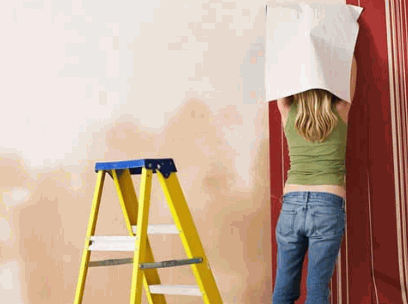
6. Smooth Out Any Bubbles Or Wrinkles
- Carefully lift the wallpaper and smooth it out, starting from the center and moving outward, to remove any bubbles or wrinkles.
- Use a wallpaper smoother or brush to press the wallpaper firmly onto the wall, ensuring a seamless and uniform appearance.
- Gently run a wallpaper seam roller over the surface to eliminate any remaining air pockets or wrinkles.
- Inspect the entire wallpapered area to ensure a flawless finish, making any necessary adjustments, including smoothing out any bubbles or wrinkles.
7. Trim Excess Wallpaper
- Cut the excess wallpaper using a sharp utility knife.
- Ensure the cut is straight and aligns with the edge of the wall.
- Gently peel away and discard the excess wallpaper.
- Smooth out the edges with a wallpaper smoother tool.
- Inspect for any remaining loose edges and secure them with adhesive.
